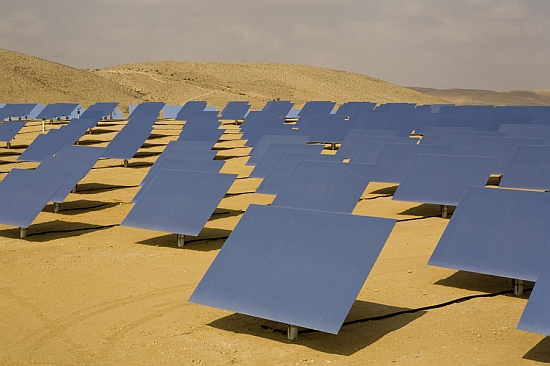
Eco Factor: Ingenious plan to cover the Sahara with solar panels to generate clean electricity for Europe.
Research estimates that if every square inch of the Earth is covered with solar panels, then the energy generated in one minute would be able to power the entire population of our planet for over a year. While installing solar panels all over the surface of the planet and the oceans too is not a feasible solution, nonetheless it does show the potential of solar energy. Researchers and environmentalists opine that the most efficient way to generate solar electricity is installing arrays of PV modules at places where there is no shortage of sunlight all through the year. The Sahara being the biggest desert of the world has always been regarded as the best place to generate solar electricity.
Dr. Anthony Patt, a research scholar at the International Institute for Applied Systems Analysis in Austria, estimates that if a fraction of the Sahara, probably the size of a small country, be covered with solar panels, the energy generated would be sufficient to power all of Europe. Dry climate and the high-intensity of the sun’s rays will benefit the installation, making it a highly-efficient venture.
Dr. Patt’s plan is to use mirrors to focus the sun’s rays onto a thin pipe containing either water or a salt. The heat generated by the process would turn water into steam or liquefied salt. In both cases the energy produced could be used to power electricity generating turbines. The installation would also make it possible to store energy for several hours before being used to generate electricity, thereby saving the cost of storing electricity in batteries.
The Dark Side:
As outrageous the plan might look to be, if completed it will be able to solve the energy crisis without showing its effect on the environment. However, Dr. Patt estimates that actually building such a system would cost nearly $70 billion, not to mention the frowning faces of the local community, who’ll resist having transmission cables installed near their homes.
Via: ConsumerEnergyReport




